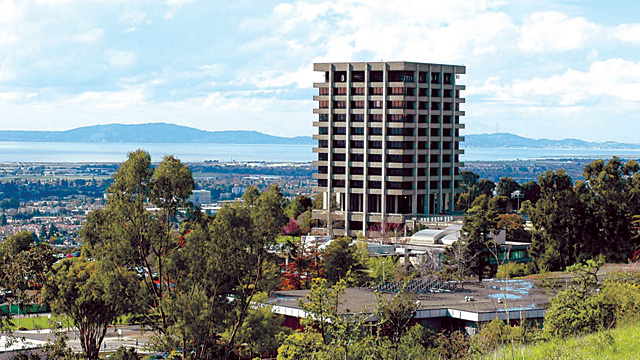
Scientists with the U.S. Geological Survey are looking for volunteers in the East Bay to help document a powerful seismic event in mid-August, when a 13-story building on the California State University, East Bay campus will come crashing down, making way for a new, seismically stable replacement.
The implosion of Warren Hall will mimic the energy of a 2.0-2.5 magnitude earthquake, giving geologists a unique chance to study what happens below the surface.
When USGS geophysicist Rufus Catchings got a phone call about the event months ago, he recalls not hesitating. “I said, ‘Oh yes! This is exactly what I’ve needed,” he said. “The fact that it’s so close to the Hayward Fault makes this a rare opportunity.”
To measure the seismic waves, USGS is looking for volunteers in Hayward and the East Bay to help deploy a network of seismographs. Over the next month, they’ll be knocking on doors around campus, asking local residents to host the seismic instruments in their yards. Volunteers can sign up online.
“The seismograph is about the size of a beer can,” Catchings said. “We’re trying to place about 600 of them.”